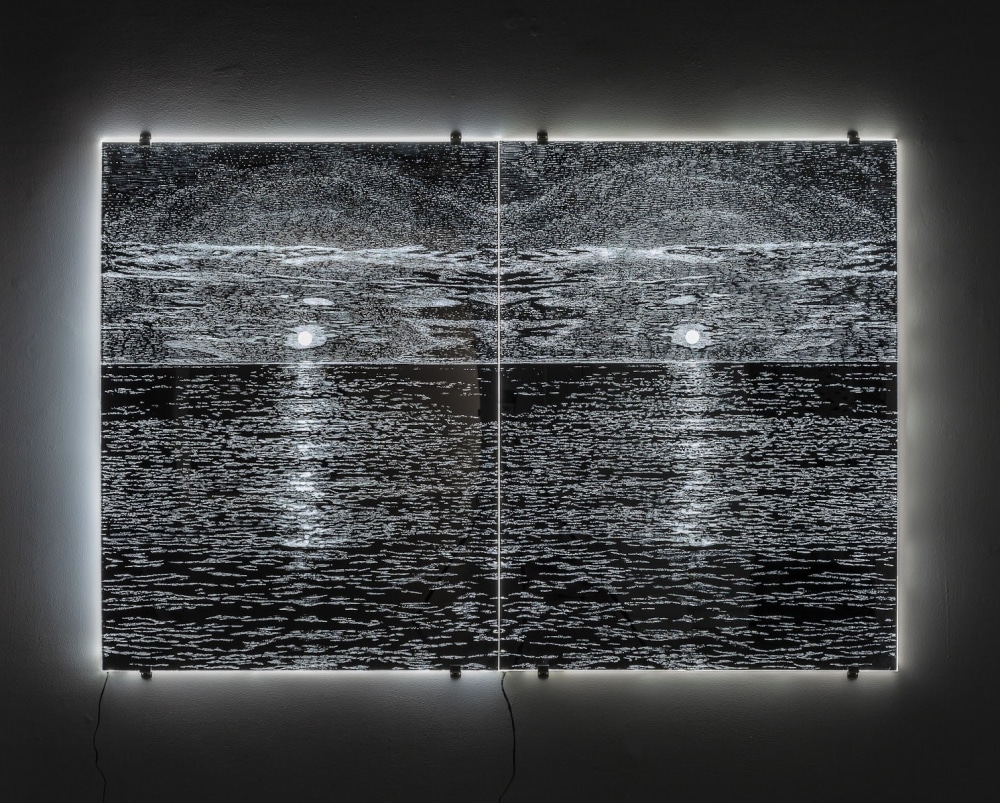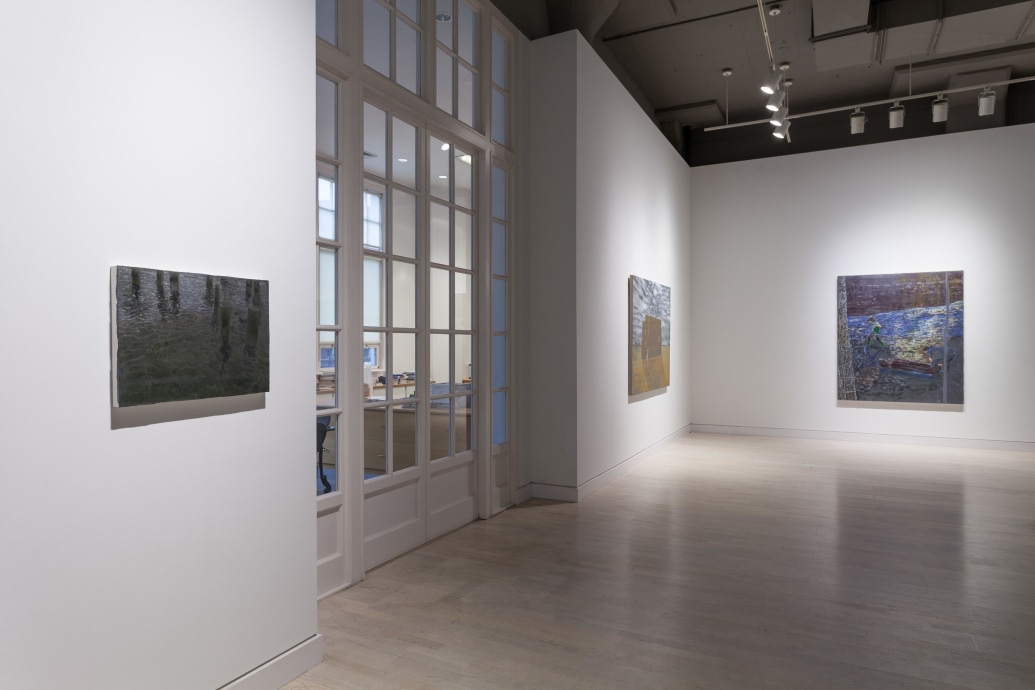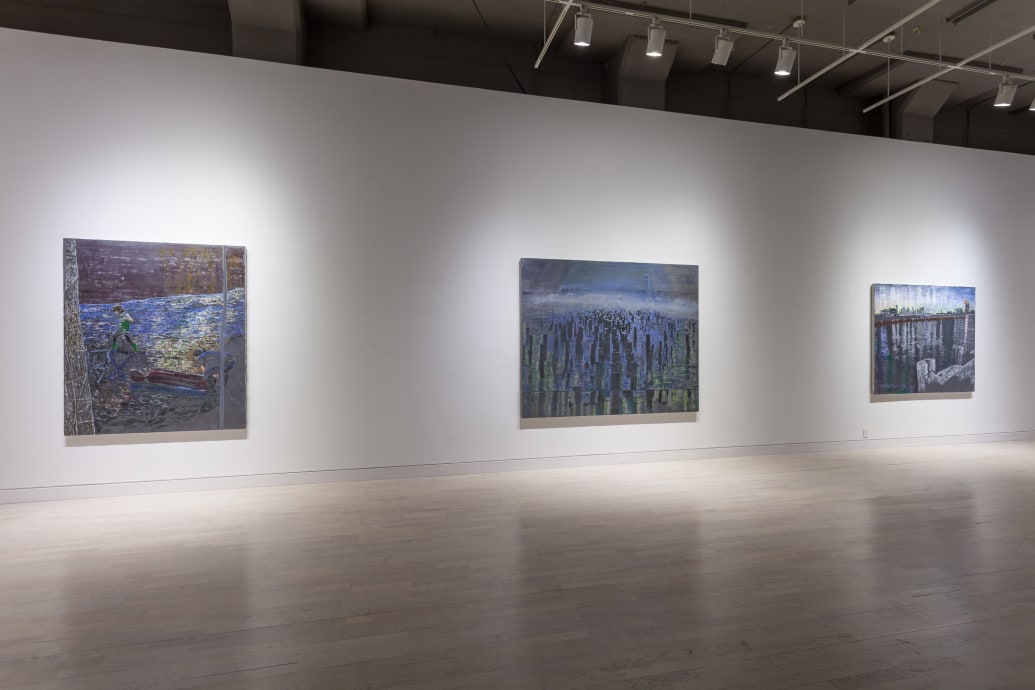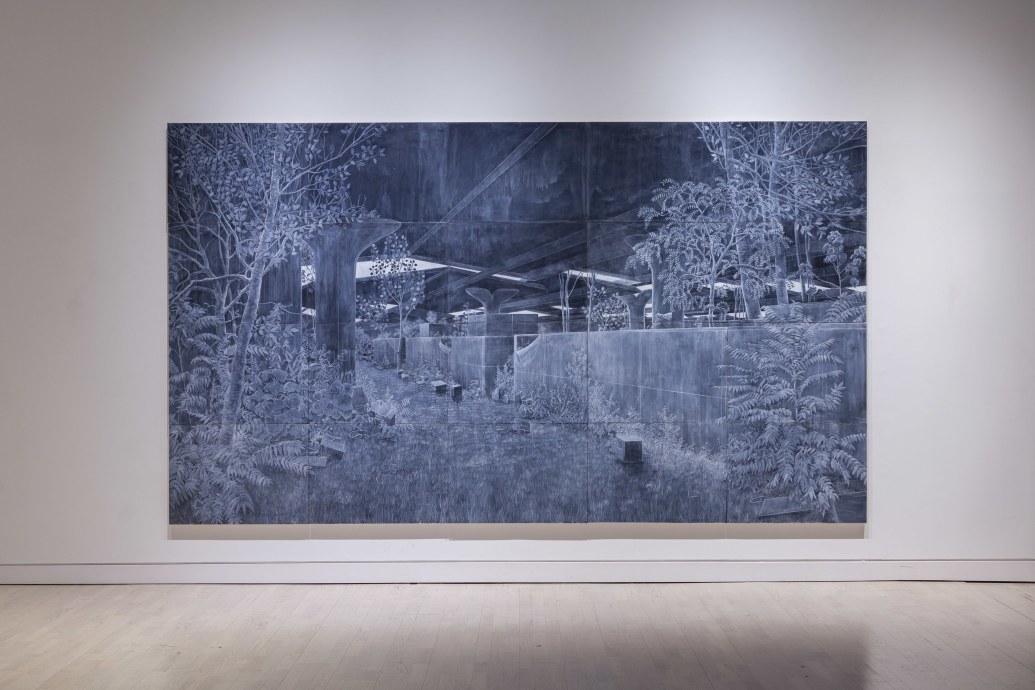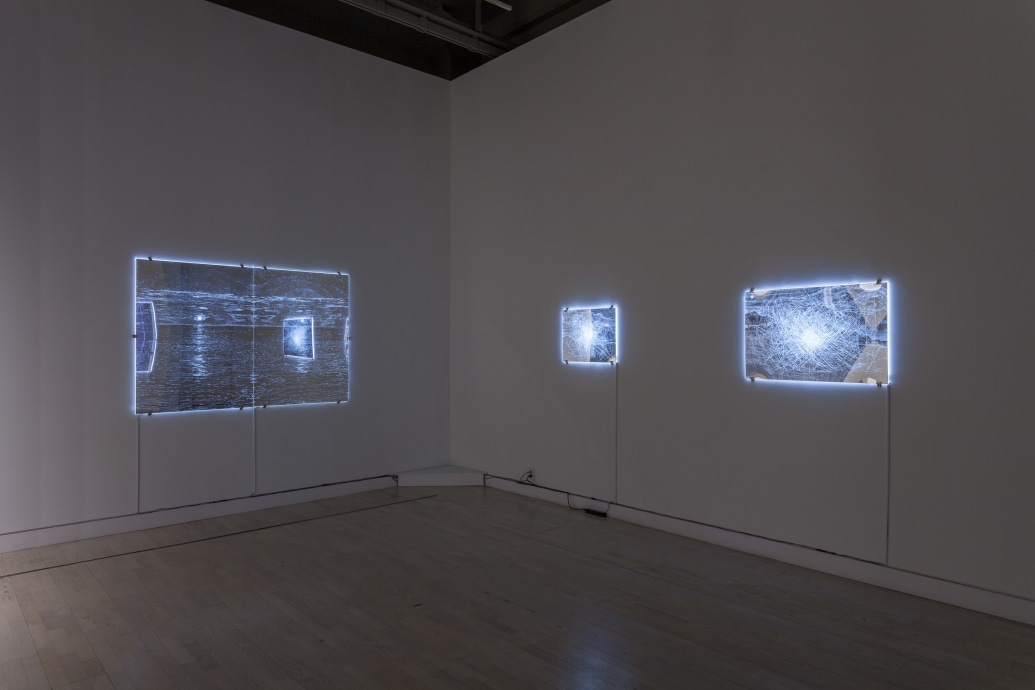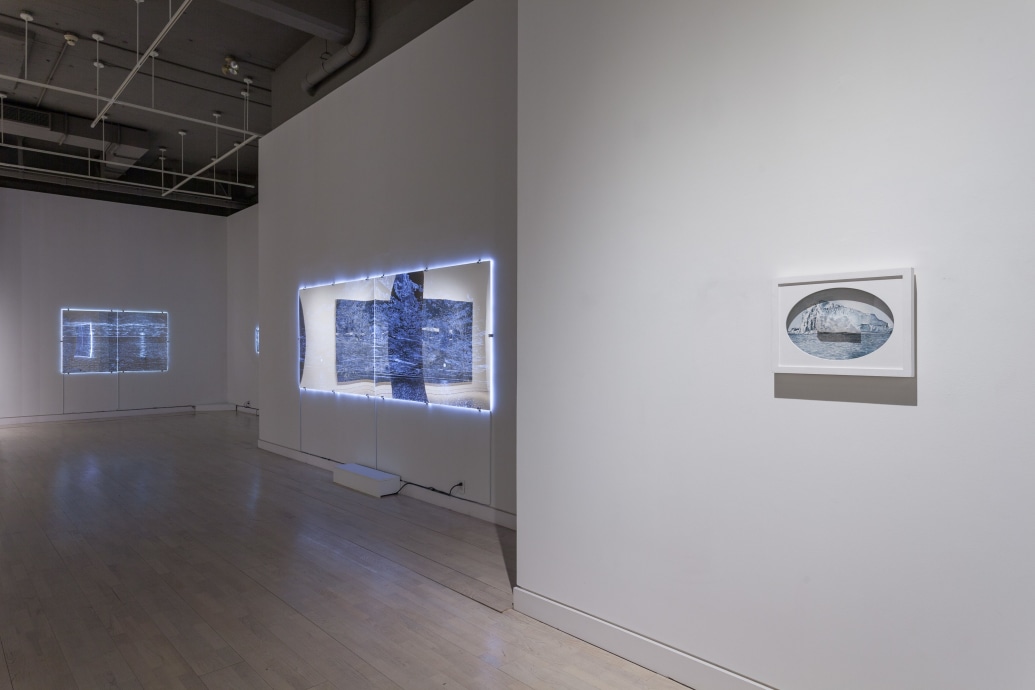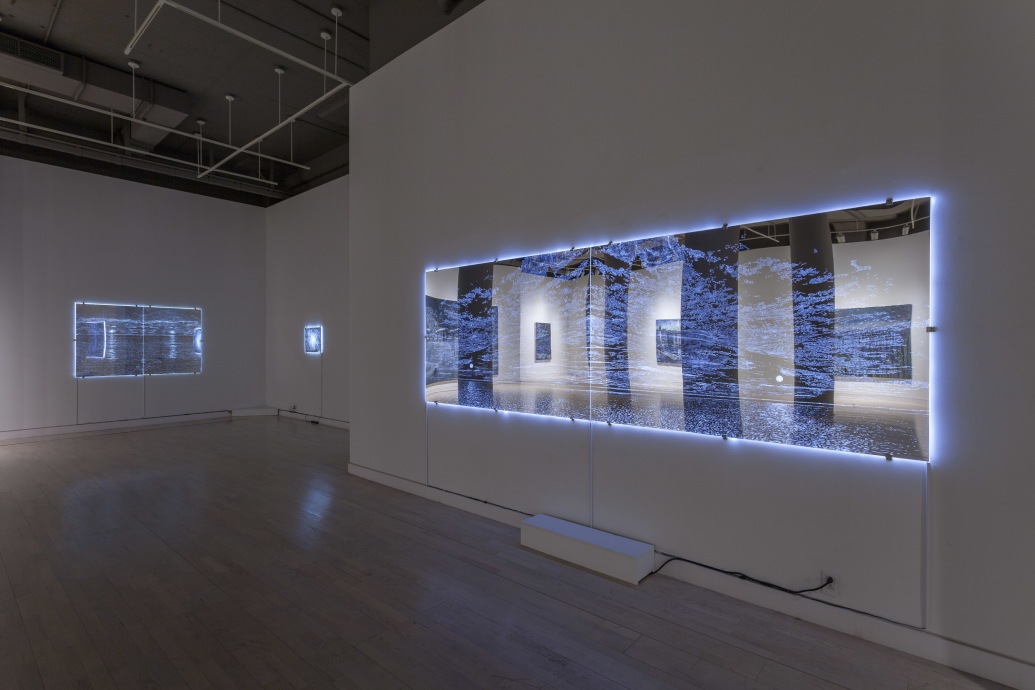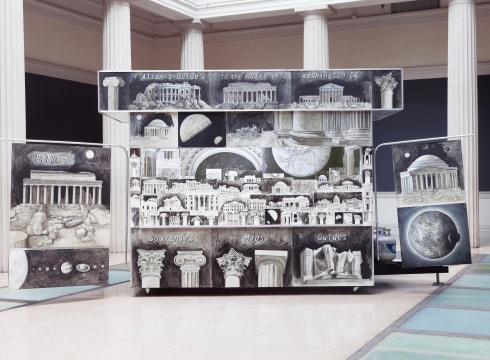
Locks Gallery is pleased to present a two-person show of the works of Ellen Harvey and Ena Swansea on view from January 9 through February 21, 2015. There will be an opening reception on February 6th from 5:30 to 7:30 pm.
Both artists have expanded the way one can encounter painting through their signature styles—Harvey with her inventive conceptual installations and engraved mirrored-Plexi works and Swansea with her oil on graphite paintings. While Harvey plays with art historical motifs and Swansea presents cinematic or almost dream-like scenes, they are united by their explorations of light, vision, and the human landscape. On view from both artists are works in traditional oil paintings alongside recent pieces that toy with our perception through unusual material experimentation. Each artist has previously had two solo exhibitions and been included in multiple group shows at the gallery.
Ellen Harvey’s New Forest/The Internal Revenue Service Reforested is a multi-panel painting that imagines the architecture of Andover’s Internal Revenue Service building reclaimed by plants. Ruins are a recurring subject of exploration for the artist. Building off of conceptual threads she began with installations like The Alien’s Guide to the Ruins of Washington, D.C. at the Corcoran Gallery of Art in 2013 and Mirror at the Pennsylvania Academy of the Fine Arts in 2005, she continues to imagine how our human landscape would be perceived if abandoned. This monotone painting takes its composition from a recent sandblasted glass mirror installation commission at the very IRS building it depicts. New Forest will be joined by Sunset and Moonrise, new mirrored Plexi light box engravings. These inherently call attention to the play with negative and positive space drawn with light in this medium and continue her exploration of seascapes which Harvey developed in her Arcade/Arcadia installation.
For the first time, examples of Ena Swansea’s early paintings will be on view alongside recent oil on graphite works. Making permanent the ephemeral nature of shadows could be a futile effort, yet works like Black and White Shadows and Purple Shadows evoke the sensation of seeing rather than painterly mimicry. Fluidly, her explorations of shadows have developed into an equal fascination with light. The unusual effect of paint on the quasi-reflective surface of graphite allows Swansea to cleverly experiment with figure-ground relationships. Her exploration of the effect of light on surfaces like water can be both the subject and embodied by the very nature of the medium itself. In dialogue with the fabricated ruins painted by Harvey, a series of Swansea’s recent paintings feature real ruins of the wooden pile fields in the Hudson River.
Jacques Lacan in his essay “The Line and Light” explored the important distinctions between understanding the subject and looking at the picture, and differentiating between the eye and the gaze. Lacan argued that the eye cannot be fully understood through a simple description of its function, as we experience our vision through desire and subjective experience. This too, is true of painting and image-making. Harvey and Swansea utilize illusory effects in their medium to magnifying this reality for the viewer—transcending the act of painterly depiction into explorations of perception, change, and the uncanny.


